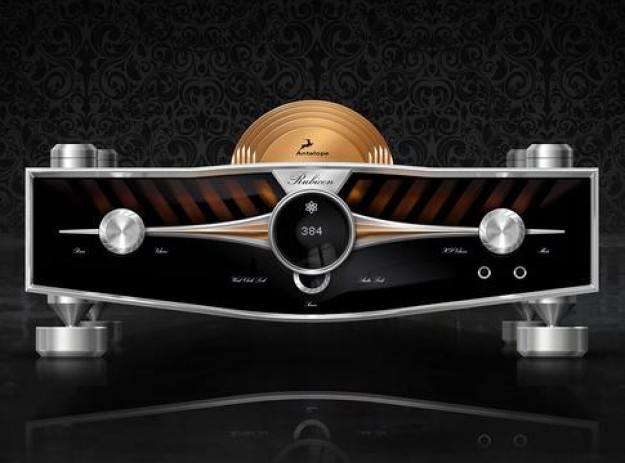 The life of a high-end audio equipment manufacturer has got to be tough. Constantly reinventing the wheel to appease the insatiable palates of hard-core audiophiles is no easy task. At some point, the well of creative engineering ideas may run dry and the audiophiles are going to be barking for more. Fortunately, that day has not yet come because the folks at Antelope Audio have just gone all atomic on audiophile’s ears. Check out the Rubicon; we think it might possibly be the world’s most bad-ass pre-amp.
The life of a high-end audio equipment manufacturer has got to be tough. Constantly reinventing the wheel to appease the insatiable palates of hard-core audiophiles is no easy task. At some point, the well of creative engineering ideas may run dry and the audiophiles are going to be barking for more. Fortunately, that day has not yet come because the folks at Antelope Audio have just gone all atomic on audiophile’s ears. Check out the Rubicon; we think it might possibly be the world’s most bad-ass pre-amp.
What makes this pre-amp amazing is its use of a rubidium atomic clock as part of its digital to analog and analog to digital converters. Wait! Where are you going? Don’t leave yet! We promise to make this more interesting. Keep reading.
A digital to analog converter (DAC) does what it sounds like it should do. It takes all the ones and zeros that digital music is made of and converts them into an electrical signal that we can ultimately listen to. The DAC is one of the most influential pieces of any digital device that makes sound. Your laptop has a DAC in it so you can run PC speakers. Your phone has one so you can listen to music with your headphones. A/V receivers use them, etc. Some companies have even built up big businesses just selling premium DACs that sound far better than the lame one installed in your laptop or phone.
One of the components that makes a DAC sound better than another is its internal clock. A DAC needs a clock to help keep all those 1’s and 0’s flying through it in tight order. If it doesn’t do its job well, the result is a nasty audible anomaly called jitter. The more accurate the clock, the less jitter, the better the sound, the happier the listener. And there’s no clock more accurate than an atomic clock.
Now back to Antelope Audio appeasing audiophiles: Rather than stick to quartz oscillator technology used in digital clocks for years, Antelope uses this rubidium atomic clock which is 100,000 times more accurate. The end result is a DAC that can handle massive amounts of data at a time (up to a 384 kHz sampling rate) whether its converting digital music for you to listen to or converting analog music into a digital file.
With two headphone outputs, a phono input, and DLNA certification included, the Rubicon could become the center of a digital music dream system. Awesome, right? The big question, of course: How much? Unfortunately we don’t yet know. Maybe Antelope Audio wants to see how much audiophile drool hits the floor before it decides on a price.





